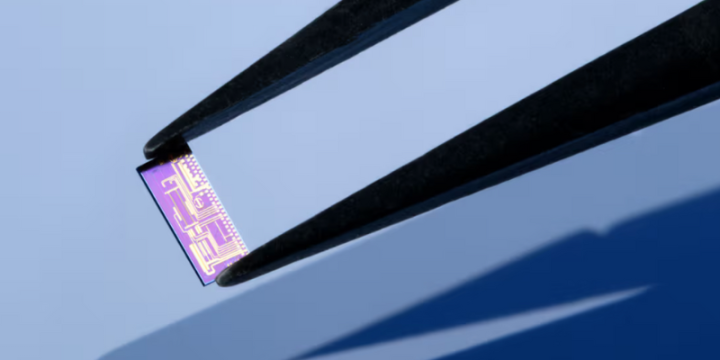For the first time in its history, Holland High Tech has launched a call specifically aimed at involving and supporting small and medium-sized enterprises (SMEs): the HighTech SME Call. This call challenges entrepreneurs to collaborate with research organisations over a two-year period on innovative projects. With a total budget of €5 million, the call supports industrial research focused on the development and application of key enabling technologies. In doing so, Holland High Tech – also known as the Top Sector High Tech Systems and Materials – strengthens the knowledge base and R&D capacity of SMEs, enabling innovations to reach the market faster and more effectively. In this first round, 13 projects have been awarded funding, focusing on areas such as parallel test methods for quantum chips, real-time molecular analysis of antibiotic-resistant tuberculosis, coordinated drone formations for solar irradiance measurement, and breakthrough technology for 3D chip interconnects in the semiconductor industry.
Peter Stolk, Chair of Holland High Tech, Top Sector High Tech Systems and Materials:
Holland High Tech is focused on addressing urgent transitions, with a strong emphasis on both economic and societal impact. The high-tech SME sector plays a crucial role in this Dutch innovation landscape. By putting these businesses in the lead within public-private partnerships, we foster targeted innovations that are grounded in real-world practice while simultaneously strengthening the national knowledge infrastructure. This call demonstrates that it is precisely the collaboration between entrepreneurs and researchers that holds the key to accelerating technological breakthroughs.
HighTech SME Call 2024
In the 2024 HighTech SME Call, Holland High Tech places entrepreneurs in the lead when it comes to setting the direction of innovation. A total of 13 SMEs will carry out industrial research activities in collaboration with a research organisation. The two-year projects now commencing focus on bringing research outcomes to market. The SME itself receives the grant directly. Where necessary, Holland High Tech has provided support in forming consortia between high-tech SMEs and research organisations.
The 13 funded projects
FononTech in cooperation with TNO
Impulse Printing: The fastest 3D interconnect in the world
FononTech is pioneering Impulse Printing™ a breakthrough technology designed to revolutionize 3D chip interconnects in the semiconductor industry. As traditional scaling approaches reach physical and economic limits, innovation in advanced packaging has become critical.
Innovation Domain: Semiconductor Technologies
1NA Technologies in cooperation with Leids Universitair Medisch Centrum
Nano-Integrated Molecular Imaging for Therapeutic Innovation
The Nano-Integrated Molecular Imaging for Therapeutic Innovation (NIMITI) project aims to develop a breakthrough imaging platform that combines high-throughput single-molecule imaging (NanoLoom) with cryo-electron microscopy (cryo-EM) to accelerate drug discovery. By enabling real-time analysis of molecular interactions, this technology will improve the identification and optimization of novel antibiotics, particularly targeting multidrug-resistant Mycobacterium tuberculosis (M. tuberculosis).
Innovation Domain: Imaging Technologies
IMSystems in cooperation with University of Twente
Contact Optimization for Reducer Efficiency
The patented Archimedes Drive is a new standard in high-performance gearbox technology. Traditional systems use imprecise gear teeth; the Archimedes Drive uses tractive contact to transmit torque. Greater responsiveness, efficiency, and precision render the drive a key enabler for growing robotics, medical and energy sectors. The CORE project addresses key challenges in drive optimization and will deliver the new knowledge and expertise required to enable further performance gains.
Innovation Domain: Optical Systems and Integrated Photonics
Somni Solutions in cooperation with The Hague University of Applied Sciences
Innovatieve optische reksensor voor grote vervorming van composieten
Somni Solutions in partnership with The Hague University of Applied Sciences (THUAS) develops an innovative fiber-optic strain sensor for composite materials used in aviation, hydrogen storage, and wind energy. This sensor improves safety by detecting material strain up to 5000 microstrain. Partnering with THUAS, the project advances optical sensing technology for the energy transition. Upon completion, Somni aims to commercialize the sensor globally.
Innovation Domain: Optical Systems and Integrated Photonics
SpectX in cooperation with Eindhoven University of Technology
Dynamic Swarm Coordination for Solar Irradiance Mapping and Monitoring
This project focuses on advancing imaging technologies for Irradiance and cloud cover (albedo) measurement using drone swarms over large solar PV plants. By leveraging high-resolution imaging sensors and AI-driven data processing, the project aims to enhance solar forecasting accuracy. Validation will be conducted in a realistic simulation environment ensuring a cost-effective and scalable approach to aerial environmental monitoring.
Innovation Domain: Imaging Technologies
Q*Bird in cooperation with VU Amsterdam
Quantum Infrastructure for Secure Timing and Communications Systems
Secure communications are crucial to a society whose economy, critical infrastructure and defense systems depend heavily on ICT. Current encryption methods are becoming increasingly insecure against (quantum) threats. A concurrent cyber security risk stems from the critical dependence of ICT infrastructure on timing signals from space-based GNSS systems. Quantum-secured communication promises a solution, but is currently limited in distance and timing functionality needs to be integrated.
Innovation Domain: Quantum Technologies
QuantaMap in cooperation with TNO
QUACIMI: QUAntitative, Cryogenic Imaging of MIcromagnets on Quantum Chips
Quantum computing has the potential to revolutionize many aspects of society by solving real-world problems including the design of new drugs, materials, and catalysts with unprecedented accuracy. The QUACIMI project focuses on improving the performance of quantum chips by developing an advanced quantitative imaging technique. The goal is to accurately characterize the magnetic field generated by on-chip micromagnets - crucial for the development of scalable quantum computing.
Innovation Domain: Quantum Technologies
Cordis SUITE in cooperation with Eindhoven University of Technology
AI-based Software Engineering with Formal Verification for Critical Systems
The SCS4AI project focuses on industrial research into an innovative method for AI-driven software development with formally verified results. By combining AI with Supervisory Controller Synthesis (SCS), software for critical systems is automatically verified and corrected. This enhances both reliability and productivity in the development of control software for sectors such as infrastructure and industrial automation.
Innovation Domain: Systems Engineering
Ore Energy in cooperation with TNO
Improvement of the energy efficiency of Fe-air batteries through advanced electrocatalyst materials
Iron-air batteries offer a cost-effective, long-duration energy storage solution crucial for renewable energy integration. Unlike lithium-ion batteries, they use abundant iron, reducing costs and supply chain risks. This project aims to enhance their efficiency by developing and optimizing advanced electrode materials tailored for iron-air battery applications. accelerating commercialization and supporting global sustainability goals.
Innovation Domain: Energy Materials
CarbonsAI in cooperation with Eindhoven University of Technology
An X-ray computational framework for integrated multiphase inorganic material characterization
Industrial scale processes like steel manufacturing and waste incineration produce vast amounts of by-products, e.g. steel slags and ashes. To improve circularity, it is crucial to develop sustainable solutions for such secondary materials. To facilitate this, a thorough understanding of what they consist of is essential. However, their multi-component and multi-phase nature, combined with compositional variability, complicate their characterization and utilization.
Innovation Domain: Imaging Technologies
Lionite in cooperation with VSL National Metrology Institute en Sol Photonics
Characterization of High-speed Acoustic Optical Sensors
Sensors based on optical fibres use optical signals for extremely sensitive measurement of strain, pressure and vibration. There are many opportunities for optical fibres in acoustic applications, such as in medical diagnostics and detecting cracks in composites and concrete. With existing sensors this is impossible due to limited measurement frequency. In project CHAOS new technology is being developed that opens the door for the next generation of acoustic optical sensors.
Innovation Domain: Optical Systems and Integrated Photonics
Kalpana Systems in cooperation with Delft University of Technology
First Robust Industrial System for Battery Improvement by Atomic Layer Deposition
To enable the energy transition, high-capacity, long-life battery systems must be available and affordable. It is essential for such batteries that a bulk electrode material with a high capacity, in our case silicon, is used for the double-sided electrodes. Additionally stable interfaces are crucial, since the properties of a battery and in particular the degradation mechanisms are largely determined by the internal interfaces, i.e. the electrode-electrolyte interface (SEI).
Innovation Domain: Energy Materials
Orange Quantum Systems in cooperation with Delft University of Technology
Parallel and Automated Qubit Characterization for Scalable Quantum Chips
Quantum computing has the potential to revolutionize industries by solving problems beyond the reach of classical computers. However, as quantum chips scale up, slow and resource-intensive testing and characterization required for operation as well as development limits progress. The PAC-QC project addresses this bottleneck by advancing automation and introducing parallelized characterization methods, ensuring that quantum hardware development remains efficient and scalable.
Innovation Domain: Quantum Technologies





